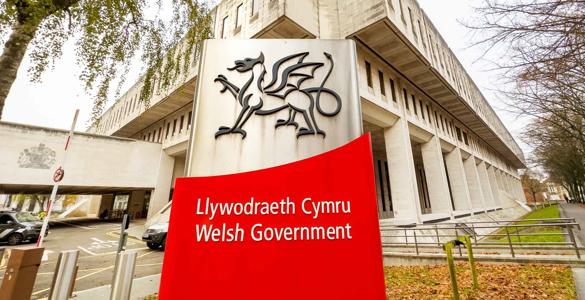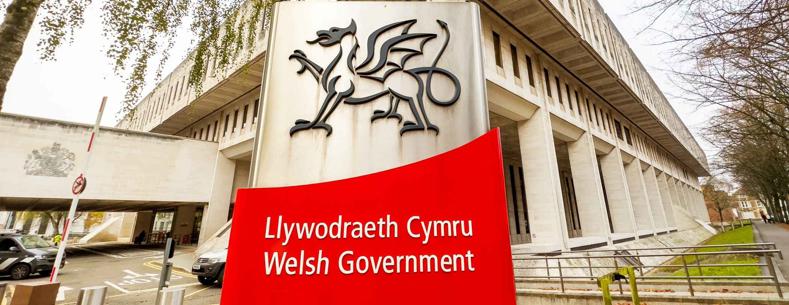In January 2022, a new framework for intergovernmental relations (IGR) in the UK was published by the UK Government.
Officials from all four nations of the UK had been working on an agreement since 2018. It was agreed by Ministers that, in light of the UK’s departure from the EU, the four governments of the UK would have to work more closely together to manage things like policy divergence and the implementation of international obligations.
One year in to the new agreement, this article looks at how the new structures are being implemented, and whether it has been the “significant constitutional step forward” it has been described as.
Why do intergovernmental relations matter?
It’s often thought that responsibility for policy is either devolved to the Senedd or reserved to Westminster. The reality is more complex. The boundaries of where power lies are often blurred. Governments across the UK need to find ways to work together to manage these tensions – or risk failing to make effective policy decisions.
What are the new intergovernmental structures?
The Review of Intergovernmental Relations (‘the review’) established a three tier system for ministerial intergovernmental engagement. These are:
- Interministerial Groups (IMGs): across various different policy areas, for engagement at portfolio or departmental level;
- Interministerial Standing Committee (IMSC) to provide oversight of the IMGs and to discuss cross-cutting issues, and a Finance Interministerial Standing Committee (F:ISC) to discuss cross-cutting matters relating to finance; and
- Prime Minister and Heads of Devolved Governments Council: chaired by the Prime Minister.
The review set out an approach based on consensus, rather than one based on statute. The review also established a new dispute resolution procedure, replacing the old process which had been criticised by some academic commentators as being weighted towards the UK Government.
The Senedd Research article, ‘The Review of Intergovernmental Relations: a “significant constitutional step forward”?’, provides more analysis of these structures and the new process for resolving disputes.
What has the first year of the review looked like?
The review set out parameters for the new tiers to meet at regular intervals, depending on the level of meeting. The four governments have joint control over agendas and location.
Figure 1 lists known meetings of the new structures. Only meetings held after the publication of the review on 13 January 2022 are included. This information has been gathered from both the UK Government and Welsh Government websites, where meetings have been publicly declared and where a communiqué was issued. The table includes all proposed IMGs listed in Annex B of the review.
Figure 1: Meetings held under the new IGR structures.
Sources: UK Government, Intergovernmental relations; Welsh Government, Announcements, both accessed 27 January 2023.
Is the new agreement being implemented?
Since the review was published, the UK Government has been led by three different Prime Ministers. The position of UK Minister for Intergovernmental Relations has been held by two different Ministers over three separate periods. During the premiership of Liz Truss, few IGR meetings were held, and the then Prime Minister did not hold any meetings with other UK heads of government. The First Minister, Mark Drakeford, described this period of IGR as a “collapse”.
Meetings have resumed a more frequent schedule since the current UK Prime Minister took office in October. The first meeting of the Prime Minister and Heads of Devolved Governments Council was held on 10 November, attended by the new Prime Minister and the First Ministers of Wales and Scotland.
It remains unclear to what extent the new dispute resolution procedure has been used. In evidence to the Senedd’s Finance Committee on 29 September, Director at the Welsh Treasury, Andrew Jeffreys, said the Northern Ireland Executive were currently using the new dispute procedure in a disagreement with the UK Treasury. However, this appears to be the only known use of the new dispute resolution procedure, and public information on its use is very limited.
A more formal system of intergovernmental relations?
IGR in the UK takes place in both formal and informal ways.
One of the criticisms of the old Joint Ministerial Committee (JMC) structures, made by academics, was that they were not transparent, and were too reliant on informal relationships. As far back as 2002, parliamentary committees were calling for greater use of formal mechanisms to manage IGR.
The Joint Ministerial Committee (JMC) were the original structures for intergovernmental relations in the UK. They were created at the formation of the National Assembly for Wales and the Scottish Parliament in 1999. Set out in the memorandum of understanding on devolution, they werecriticised by multiple sources, including academics and parliamentary committees, for being too dominated by the UK Government, for being ad hoc in nature, and for lacking transparency.
The review has, to some extent, led to more formal and transparent IGR processes. There are more formal groups in place, with terms of reference published and at least semi-regular meeting schedules.
In its quarterly reviews of IGR, the UK Government provides an update on the numbers of meetings held, as well as several case studies of the UK nations working together. The content of these case studies reflects findings shown in Figure 1: that a minority of IMGs are active and meeting regularly, while the majority are either less active or yet to be established.
The IMG on Environment, Food and Rural Affairs is the most active of the IMGs. Other IMGs, including Net Zero, Business and Industry, and Education also seem to have met more often than other IMGs.
Outside of these policy areas, the case studies focused on meetings and discussions outside of the review structures. This reflects findings in Figure 1 that the review has been implemented in some policy areas. In others, more informal relations are still the dominant feature of IGR.
Another criticism of the old JMC system made by some academics was that post-meeting communiqué did not offer much insight into the substance of discussions.
|
The IMG on Environment, Food and Rural Affairs had an average policy discussion word count (the number of words in a communiqué that describe what was discussed and agreed upon) of 377. The Net Zero IMG on the other hand had an average of 28. No communiqué had a policy discussion word count of more than 450. |
What next for IGR in the UK?
Meetings at all levels of the new structures will continue. The First Minister, Mark Drakeford, has welcomed the increased regularity of meetings, while also calling for “more regular and predictable engagement from the UK Government”, and for the new IGR agreement to be “properly and reliably up and running”.
Article by Philip Lewis, Senedd Research, Welsh Parliament







